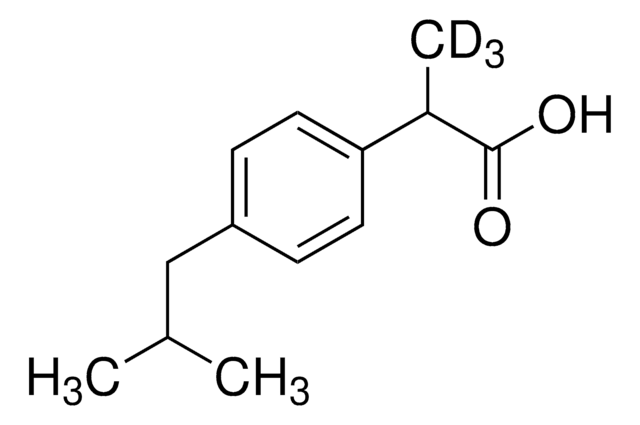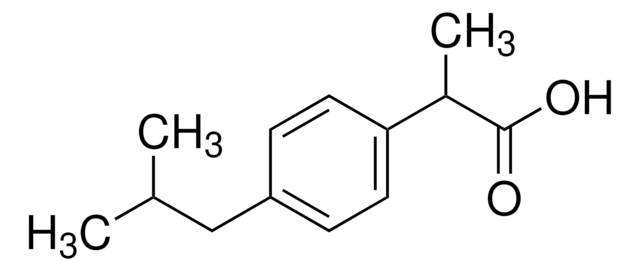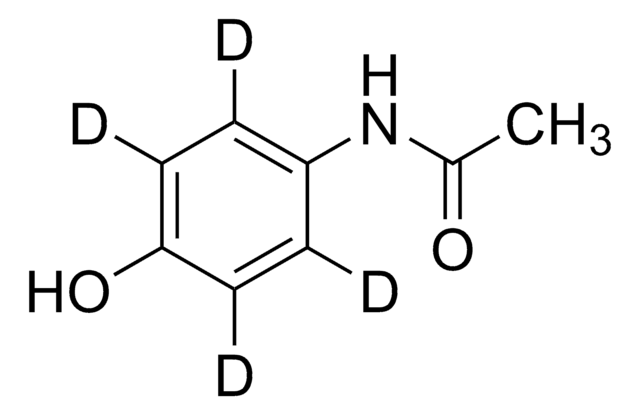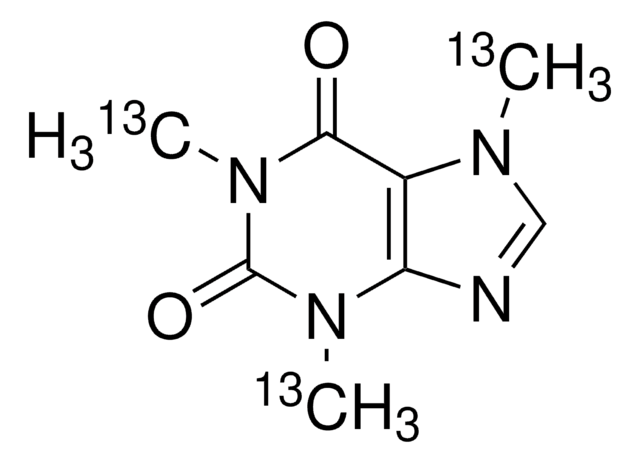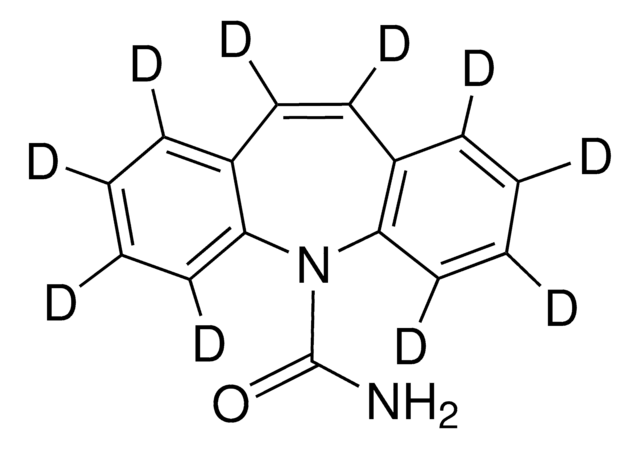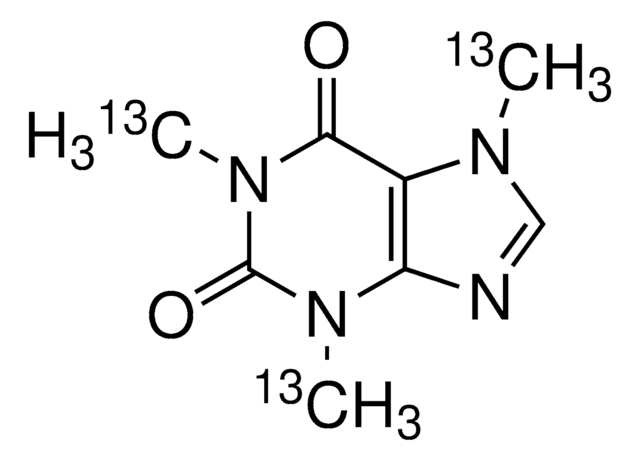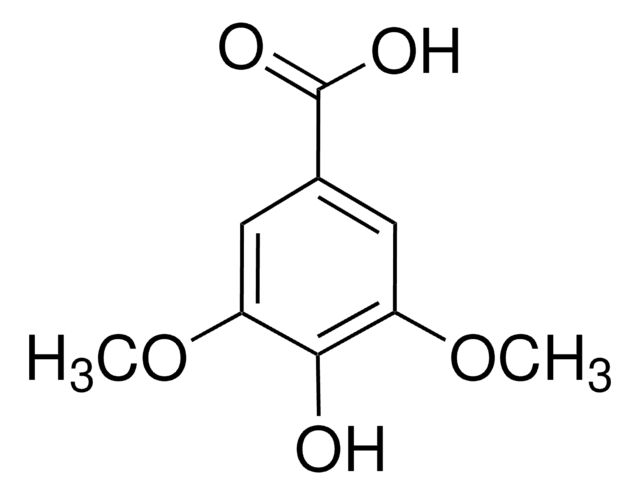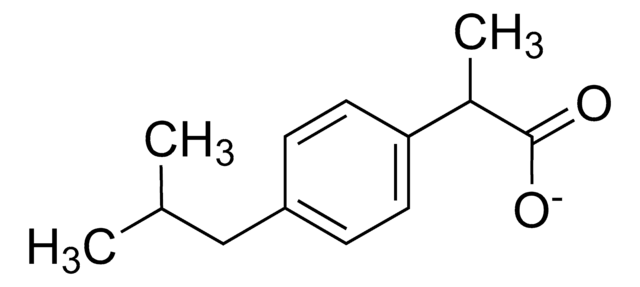55264
Ibuprofen-d3
analytical standard
Synonyme(s) :
α-Methyl-d3-4-(isobutyl)phenylacetic acid
About This Item
Produits recommandés
Qualité
analytical standard
Niveau de qualité
Pureté isotopique
95 atom % D
Essai
≥98.0% (HPLC)
Durée de conservation
limited shelf life, expiry date on the label
Technique(s)
HPLC: suitable
gas chromatography (GC): suitable
Application(s)
environmental
forensics and toxicology
pharmaceutical (small molecule)
Format
neat
Changement de masse
M+3
Chaîne SMILES
[2H]C([2H])([2H])C(C(O)=O)c1ccc(CC(C)C)cc1
InChI
1S/C13H18O2/c1-9(2)8-11-4-6-12(7-5-11)10(3)13(14)15/h4-7,9-10H,8H2,1-3H3,(H,14,15)/i3D3
Clé InChI
HEFNNWSXXWATRW-HPRDVNIFSA-N
Description générale
Application
Conditionnement
Application
Pièce de rechange
Mention d'avertissement
Warning
Mentions de danger
Conseils de prudence
Classification des risques
Acute Tox. 4 Oral - Eye Irrit. 2 - STOT SE 3
Organes cibles
Respiratory system
Code de la classe de stockage
11 - Combustible Solids
Classe de danger pour l'eau (WGK)
WGK 1
Point d'éclair (°F)
Not applicable
Point d'éclair (°C)
Not applicable
Équipement de protection individuelle
dust mask type N95 (US), Eyeshields, Gloves
Faites votre choix parmi les versions les plus récentes :
Certificats d'analyse (COA)
Vous ne trouvez pas la bonne version ?
Si vous avez besoin d'une version particulière, vous pouvez rechercher un certificat spécifique par le numéro de lot.
Déjà en possession de ce produit ?
Retrouvez la documentation relative aux produits que vous avez récemment achetés dans la Bibliothèque de documents.
Les clients ont également consulté
Chromatograms
suitable for GCapplication for HPLCNotre équipe de scientifiques dispose d'une expérience dans tous les secteurs de la recherche, notamment en sciences de la vie, science des matériaux, synthèse chimique, chromatographie, analyse et dans de nombreux autres domaines..
Contacter notre Service technique